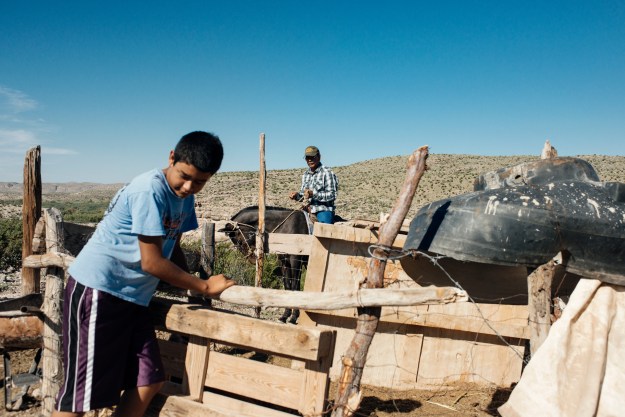Carmello pushes off the dusty riverbank and begins rowing hard against the brown, swollen current of the Rio Grande. He operates the Boquillas International Ferry, delivering travelers from Rio Grande Village, in Big Bend, Texas, to the town of Boquillas del Carmen, in Mexico.
Boquillas del Carmen is an old mining town. At its peak, it was home to almost 2,000 people. After the mines closed in 1919, Boquillas’ population fell to around 200. Since then it’s remained a sleepy village whose fortunes seem to rise and fall depending on how connected it is to the US side of the river.
When Big Bend National Park opened in 1944, its tiny international border crossing offered the remaining residents of Boquillas del Carmen a lifeline—access to groceries, gas, medicine, and tourist dollars. (The border crossing closed after 9/11, only to open again in 2013.) For years Boquillas lacked access to electricity; at night residents relied on gas lanterns. Later some residents acquired propane-powered refrigerators. In the 1990s residents appealed to US officials to route electricity from the Rio Grande Village, in the United States, to their town. The applications were blocked for species-conservation reasons. Environmental groups worried that hanging power lines would interrupt the routes of migratory birds.
In 2015 Mexican authorities oversaw the construction of a solar farm in the village, and slowly houses were connected to the new electrical grid. Made of 312 solar panels, the $1.5 million system now provides electricity to the whole town—about 70 houses. The project helped Boquillas reach a previously unattainable autonomy from its northern neighbor.
Recent governmental clampdowns on immigration to the United States and the beginning of a new section of border wall in El Paso have worried residents that their border crossing will once again face closure. But for the moment a steady stream of tourists flows between Big Bend and Boquillas, there’s reliable electricity, and the population of Boquillas is growing again. It’s hovering around 300 residents, the highest it’s been since the closure of the mines a century ago.







